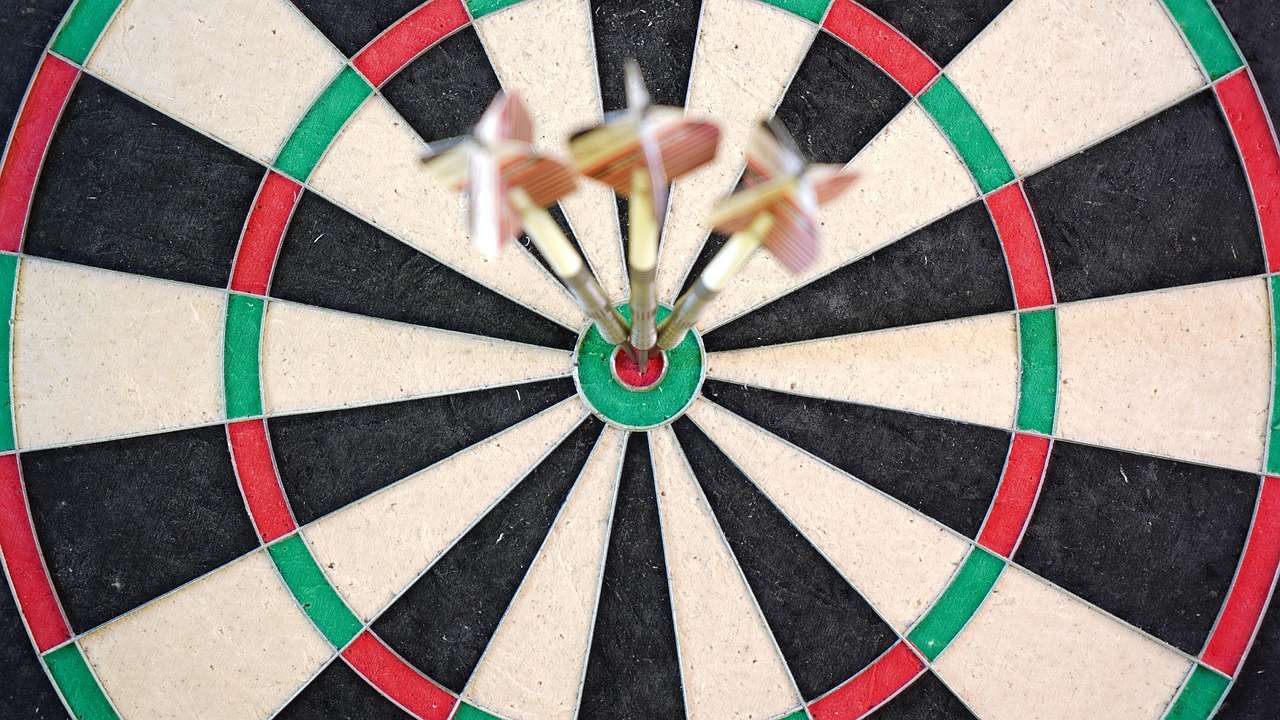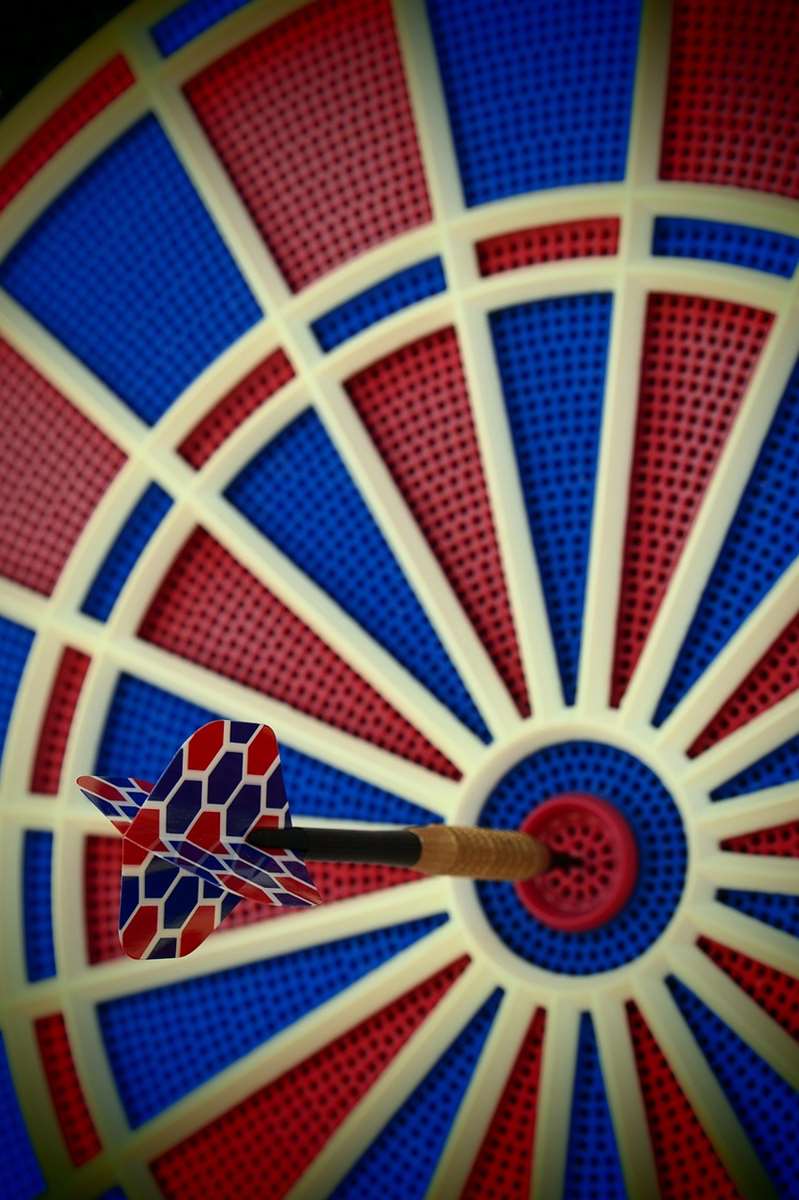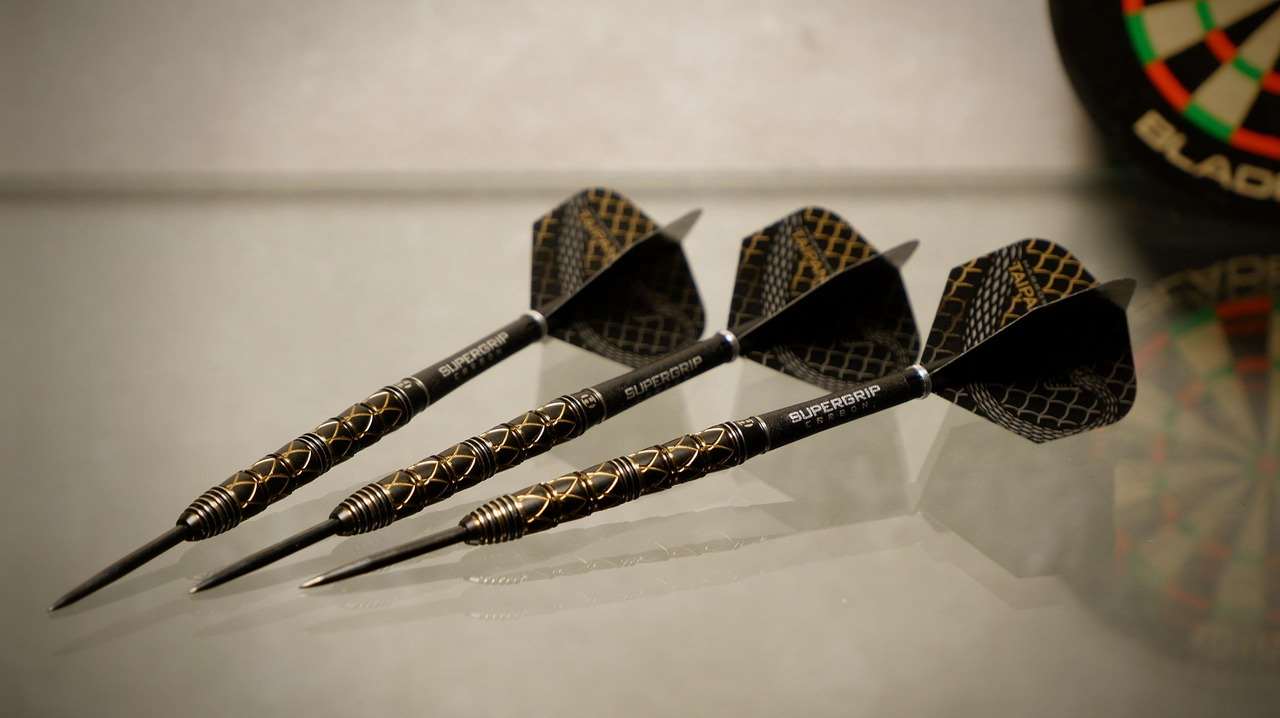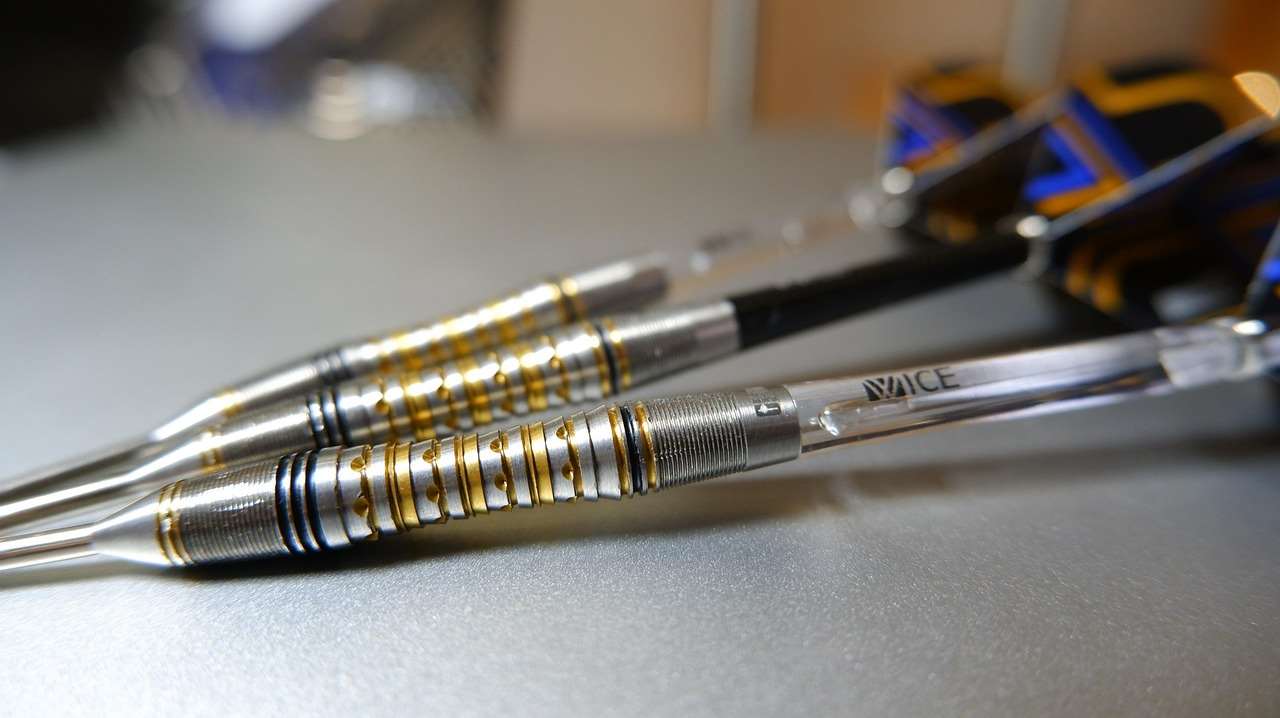The heart of any great darts game starts with quality: understanding the **dartboard herstellung** process is key to appreciating the precision and craftsmanship that goes into creating a board that can withstand countless throws. This article explores the journey of a dartboard from raw materials to the finished product, covering everything from sourcing sisal fibers to the intricate wiring that defines the scoring zones.
⚠️ Still Using Pen & Paper (or a Chalkboard)?! ⚠️
Step into the future! The Dart Counter App handles all the scoring, suggests checkouts, and tracks your stats automatically. It's easier than you think!
Try the Smart Dart Counter App FREE!Ready for an upgrade? Click above!
The Raw Materials: Beginning the Dartboard Herstellung Process
The foundation of almost every professional-grade dartboard is **sisal fiber**, a natural fiber derived from the *Agave sisalana* plant. These plants are primarily grown in Brazil and East Africa. The quality of the sisal directly impacts the dartboard’s durability and self-healing properties. A crucial aspect of **dartboard herstellung** is the careful selection and processing of this sisal. Lower quality sisal results in boards that wear out quickly, showing visible holes and reduced scoring accuracy.

Once harvested, the sisal fibers are cleaned, dried, and baled before being shipped to dartboard manufacturers. The journey from the field to the factory floor is a critical one, influencing the final product’s overall performance. Impurities or inconsistent drying can compromise the integrity of the fiber, impacting the **dartboard’s density and ability to close up after being hit**.
From Fiber to Core: Crafting the Dartboard’s Body
The next stage of **dartboard herstellung** involves compressing the sisal fibers into a tightly packed cylinder. This process requires specialized machinery that can exert immense pressure. The goal is to create a solid, uniform block of sisal that will serve as the dartboard’s core. The density achieved at this stage directly affects the board’s longevity and its ability to grip darts effectively. Boards using low quality sisal don’t last as long as a board manufactured with premium sisal.
The cylinder is then cut into discs of the appropriate thickness. These discs are meticulously inspected for any imperfections. Any disc that doesn’t meet the required standards is rejected, ensuring that only the highest quality components are used in the final product. This commitment to quality is what separates professional dartboards from cheaper alternatives.
Wiring and Scoring: Defining the Target
One of the most crucial aspects of **dartboard herstellung** is the integration of the wiring system. The wires define the scoring zones – the doubles, trebles, bullseye, and single segments. These wires must be precisely positioned and securely embedded in the sisal to ensure accurate scoring and minimize bounce-outs.
Traditionally, round wires were used, but modern dartboards often feature **knife-edge wiring** or **razor-thin wiring**. These thinner wires significantly reduce the surface area of the wire, increasing the likelihood of the dart hitting the sisal and sticking in the board. This innovation has been a major advancement in improving the playing experience, offering more consistent scoring and reducing frustrating deflections. Be sure to familiarize yourself with darts rules, as wire placement plays a crucial role.
The wiring is typically made of high-tensile steel, providing durability and resistance to bending or breaking. The wires are often treated with a special coating to prevent rust and corrosion, further extending the lifespan of the dartboard. Securing the wiring involves using staples or a similar fastening method to anchor it firmly to the sisal core.

Spider Design Considerations
The “spider,” the metal framework that divides the scoring sections, must be designed to minimize bounce-outs. Different designs include:
- Blade Wiring: As mentioned, this offers a thinner profile.
- Embedded Wiring: This design sets the wires almost flush with the sisal.
- Angle of the Wire: A subtle inward angle can help direct darts towards the board.
Painting and Finishing: Completing the Transformation
Once the wiring is in place, the dartboard undergoes a painting and finishing process. The board is typically painted with a water-based paint, ensuring vibrant colors and a smooth, even surface. The standard color scheme is black and white for the main board, with red and green used for the doubles and trebles. The bullseye is usually red, with the outer bull (single bull) often being green.
The painting process requires precision and attention to detail. The lines between the different scoring zones must be crisp and clear, ensuring accurate scoring. The paint must also be durable enough to withstand repeated impacts from darts without chipping or fading. A clear coat is often applied to protect the paint and enhance the overall appearance of the dartboard.

A crucial step is ensuring the segments are evenly coloured and that there aren’t any bleeds between colours. This speaks volumes about the **dartboard herstellung** quality control process.
Quality Control: Ensuring Excellence
Throughout the entire **dartboard herstellung** process, rigorous quality control measures are implemented. Each stage of production is carefully monitored to ensure that the dartboard meets the required standards. Imperfections are identified and corrected, ensuring that only the highest quality dartboards reach the market.
The finished dartboards are subjected to a series of tests to assess their performance and durability. These tests may include:
- Dart Impact Testing: Evaluating the board’s ability to withstand repeated impacts from darts without showing signs of wear and tear.
- Bounce-Out Testing: Measuring the frequency of bounce-outs to assess the effectiveness of the wiring system.
- Density Testing: Verifying the density of the sisal core to ensure consistent performance.
Dartboard Materials Beyond Sisal: Alternatives and Innovations
While sisal remains the gold standard for professional dartboards, alternative materials are also used in **dartboard herstellung**, particularly for entry-level or electronic dartboards.
- Paper Wound Dartboards: These are made by tightly winding paper together. They are inexpensive but less durable.
- Cork Dartboards: Cork offers a slightly better alternative to paper, providing better dart grip and longevity.
- Electronic Dartboards: These use plastic segments with small holes. Darts with plastic tips are used, and sensors register the scores. Darts scorekeeper app make calculating the score simple.
Maintaining Your Dartboard: Extending Its Lifespan
Even the highest quality dartboard will eventually show signs of wear and tear. However, with proper maintenance, you can significantly extend its lifespan and keep it performing at its best. Regular rotation of the dartboard is essential to distribute wear evenly across the surface. By rotating the board regularly, you prevent specific areas from becoming excessively worn, ensuring that the entire surface wears at a similar rate. This simple practice can prolong the lifespan of your dartboard by months or even years.

Another important maintenance tip is to remove any loose fibers from the board. Over time, small pieces of sisal fiber may become dislodged from the surface. These loose fibers can interfere with dart penetration and affect scoring accuracy. Use tweezers or a similar tool to carefully remove any loose fibers, keeping the surface clean and smooth.
The Future of Dartboard Herstellung
The **dartboard herstellung** industry is constantly evolving, with manufacturers continually seeking ways to improve the performance, durability, and sustainability of their products. Innovations in materials, wiring technology, and manufacturing processes are driving the evolution of the dartboard.
One area of focus is on developing more sustainable materials for dartboard construction. Research is underway to explore the use of alternative fibers that are both environmentally friendly and provide excellent performance characteristics. Another area of innovation is in the development of self-healing dartboards that can automatically repair damage caused by dart impacts. These boards would significantly extend the lifespan of the dartboard, reducing the need for frequent replacements.
Finding the Right Dartboard: Considerations for Buyers
When selecting a dartboard, consider factors such as skill level, budget, and desired features. Professional-grade sisal dartboards are the best choice for serious players, offering superior performance and durability. For casual players or beginners, more affordable options such as paper or cork dartboards may be sufficient.
Pay attention to the wiring system, opting for boards with knife-edge or razor-thin wiring to minimize bounce-outs. Also, consider the overall construction quality and the materials used. A well-made dartboard will provide years of enjoyment and improve your dart-playing experience.
If you have kids who are interested in playing darts, you might consider looking into a luke littler darts set kids to get them started.

Understanding Common Dartboard Terms
Familiarizing yourself with common terms used in the world of darts and dartboards can enhance your understanding and appreciation of the game. Here are a few essential terms:
- Bullseye: The center of the dartboard, worth 50 points (25 for the outer bull). Understanding bull shot darts can greatly improve a player’s game.
- Treble Ring: The narrow ring in the middle of the board, scoring triple the value of the number it lands on.
- Double Ring: The outer ring of the board, scoring double the value of the number it lands on.
- Oche: The throwing line. It’s vital to know darts bull to oche distance for fair play.
- Flights: The fins attached to the back of the dart, providing stability in flight. It is possible to darts flights personalisieren for a professional look.
Conclusion: The Art and Science of Dartboard Herstellung
The process of **dartboard herstellung** is a fascinating blend of craftsmanship, engineering, and quality control. From the careful selection of sisal fibers to the precise placement of the wiring, every step is crucial in creating a dartboard that meets the demands of both professional and casual players. Understanding the intricacies of this process allows you to appreciate the quality and value of a well-made dartboard and make informed choices when selecting one for your own game. Consider purchasing a high-quality sisal dartboard for the best playing experience and long-term value. It’s an investment in your enjoyment of the game. Now, go forth and perfect your aim!
Hi, I’m Dieter, and I created Dartcounter (Dartcounterapp.com). My motivation wasn’t being a darts expert – quite the opposite! When I first started playing, I loved the game but found keeping accurate scores and tracking stats difficult and distracting.
I figured I couldn’t be the only one struggling with this. So, I decided to build a solution: an easy-to-use application that everyone, no matter their experience level, could use to manage scoring effortlessly.
My goal for Dartcounter was simple: let the app handle the numbers – the scoring, the averages, the stats, even checkout suggestions – so players could focus purely on their throw and enjoying the game. It began as a way to solve my own beginner’s problem, and I’m thrilled it has grown into a helpful tool for the wider darts community.